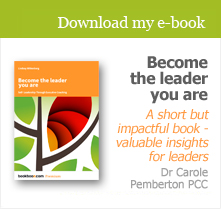Conflict

Where is conflict?
There’s a lot of it about – conflict within oneself, between individuals at work and out of work, between teams, organisations, nations, political systems, ideologies (and more). And generally it’s neither fruitful nor cheap: it can be costly, painful and damaging. It may be hidden or latent, but it usually manifests sooner or later, with negative impacts. Its greatest reward may be an immediate sense of self-righteousness, or ‘winning’, or gloating, but none of those has much substance as a reward or bring any sustainable benefit.
The opposite of conflict
So what’s the opposite – or at least what are the alternatives to conflict?
Some might say compassion. Others might say community, cohesion, or connection. Others might opt for peace or safety or kindness. Or collaboration or cooperation. The list of possible candidates is long. And they don’t include compliance, oppression or obedience at the hands of a demanding or dictatorial leader.
The impact of conflict
Conflicts can range from playground spats, or a few cross words, to wars between nations. They can pass in a moment and leave no apparent trace, or they can leave deep and long-lasting physical, emotional, mental, social, or economic wounds – and at its worst, individual or collective trauma. Some of those wounds may heal over time, and some may not. They often leave the protagonists in an unbending state of anger or fear that offers no resolution to the original issue.
They may touch the personal sensitivities of those involved, and so inflame emotions in the process – which may drive violent speech, behaviour or actions. It can take exceptional compassion, wisdom, discipline and insight to manage the emotional reaction to the conflict, let alone the conflict itself.
Not being in conflict brings a greater chance of wellbeing (individual and collective), of efficiency (conflict is expensive, even if only emotionally), of a sense of safety (including psychological safety) and of organisational or societal health.
What does not being in conflict take?
Although one can see conflicts in one sense as political or ideological, from another perspective they can look emotional – driven by anger, fury, fear, greed, hatred or a drive for control or power. In such cases they are characterised by a lack of empathy, or of willingness to listen, or of insight about the relationship between force and peace (if indeed peace is a driver at all).
Besides needing emotional intelligence (and especially empathy: an openness to putting oneself in others’ shoes), not being in conflict, or defusing conflict, can take humility and a willingness to be vulnerable – not always easy when one (or a team or a government) doesn’t feel safe. So it takes psychological safety too – the belief that you won’t be undermined, criticised or punished for speaking up – and a willingness to both take appropriate responsibility and avoid the use of violent language or behaviour.
It certainly isn’t helped by punitive force, by self-righteousness, or by being ‘sure’ that you’re right and that ‘the other’ is wrong.
On the contrary, compassion, a genuine desire to listen, to be interested in the views of ‘the other’, to contemplate different possibilities from those we can be fixated on, and to avoid being judgmental, do help.
Non-violent communication
And we can do worse than be guided by Marshal Rosenberg[i]’s principles of non-violent communication (observe what’s actually happening, without judgment or evaluation; say how you feel; express what you need that’s connected to your feelings; and, finally, to express a request).
And while expressing one’s feelings is without question a useful action, this needs to be done with respect and calmly if more wounding is not to be caused by the manner of expression.
It’s also difficult. It’s especially difficult to be compassionate when you’re in pain mentally or emotionally because you’ve been wounded.
Seeing conflict as systemic
Seeing conflict as a systemic phenomenon – a question of interdependencies – rather than identified with individuals or individual causes, can take the sting out of it and increase the chances of resolution.
And it takes a shift in thinking and conceptualisation from ‘you and I’ to ‘we’ – a willingness to see and relate to the world not as ‘me / my / the side I’m on’, and indeed as not polarised into sides at all. That polarised state of mind sets back the chances of defusing conflict from the very beginning.
One step forward
Conflict is ubiquitous in our world, on a scale from trivial to large-scale. If we feel strongly about the damage it causes, it’s worth recognising both the right and the responsibility we each have to avoid or calm it.
[i] ‘Non-Violent Communication: a Language of Life’ by Marshall B Rosenberg, Puddle Dancer Press, 2003
Photo by Nikola Johnny Mirkovic on Unsplash


